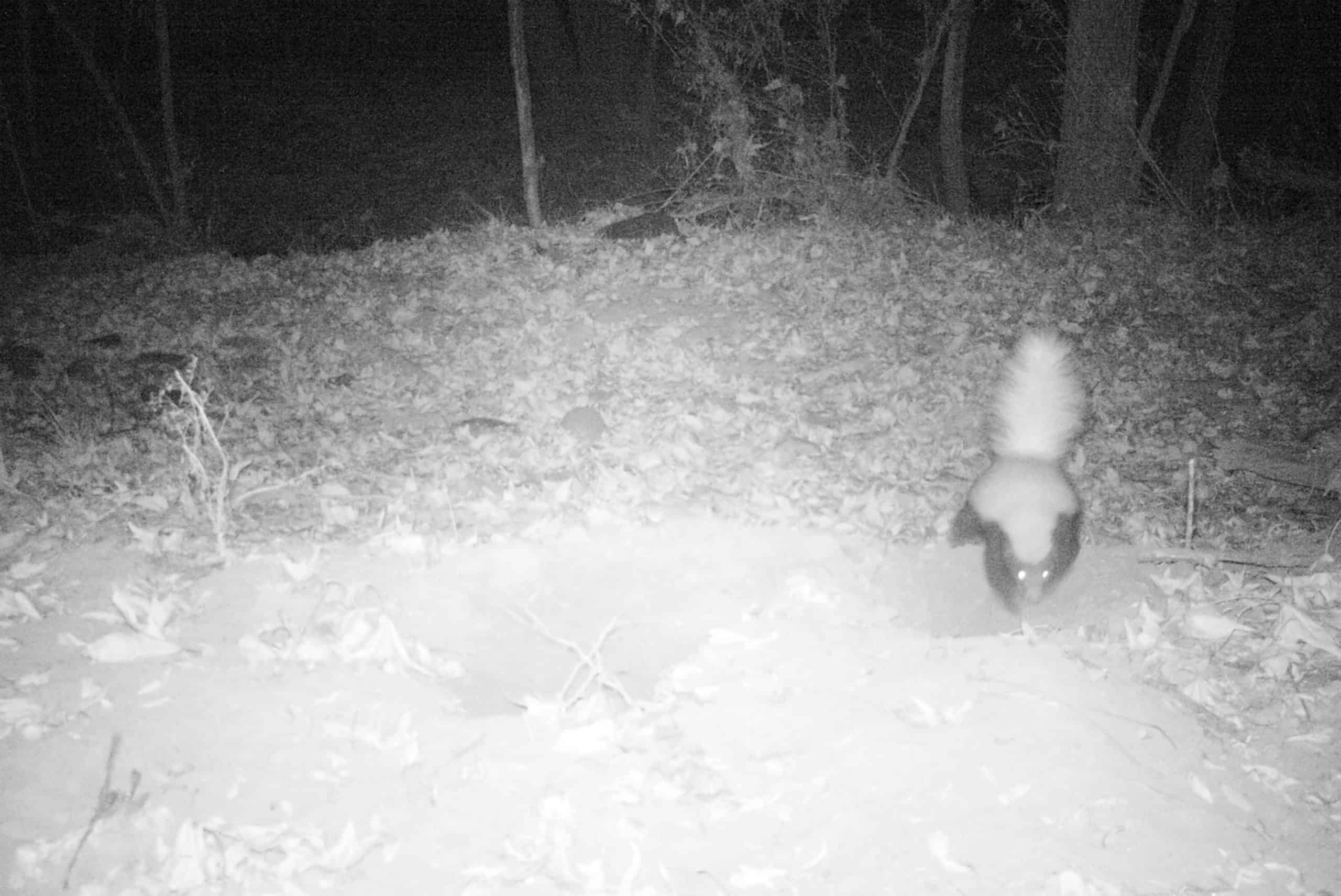Share this article
Wild Cam: Researchers find high mammal diversity in Sonora
Surveys in Sonora, Mexico have found high mammal diversity along waterways, including some washes that lead toward the border into the United States.
Field conservationists with Cuenca Los Ojos, a partner with the Phoenix Zoo, have been restoring waterways in the Mexican state for some time, creating structures to retain ground water and to help with flooding issues.
“It was a magical system—it’s a semi-arid grassland with a lot of hills and ridges,” said TWS member Kinley Ragan, a field conservation research technician at the Phoenix Zoo.
Enlarge

Credit: Phoenix Zoo
She and her colleagues surveyed the region around Los Ojos, Mexico to determine a baseline for the mammal diversity there.
For a study published in the Journal of Wildlife Management, they set up trail cameras on washes—areas that are temporarily flooded during monsoon season, and on other more perennial water sources.
Enlarge

Credit: Phoenix Zoo
The most interesting footage they collected was of a jaguar (Panthera onca)—the first confirmed sighting in that area in 25 years. Ragan said it’s exciting because the area is one of the three predicted areas that the big cats might use to cross into Arizona.
The researchers focused on medium and large mammals for this study—anything that weighed more than 1 kilogram. Under these specifications, the cameras detected 21 species.
“There’s a lot of biodiversity around the washes,” Ragan said. “Water is life there.”
Enlarge

Credit: Phoenix Zoo
The most common species was the American hog-nosed skunk (Conepatus leuconotus), pictured above. But they also saw three other species of skunks: striped (Mephitis mephitis), Western spotted (Spilogale gracilis) and hooded (M. macroura).
“It was exciting to see all four skunks existing there,” Ragan said.
White-tailed deer (Odocoileus virginianus) were the second most common species on their cameras. According to the researchers’ findings, deer and cougars (Puma concolor) had opposite habitat preferences. The cougars typically appeared in areas with more mountainous topography, perhaps since they offer more places to ambush their prey. Deer, on the other hand, used flatter areas like fields.
Enlarge

Credit: Phoenix Zoo
The cameras also revealed that mammals, including the collared peccary (Pecari tajacu) pictured above, used perennial waterways a lot, but they also made use of the ephemeral washes.
“Really, they were using a variety of washes to move,” Ragan said, adding that all these waterways, permanent or temporary, are of vital importance for habitat connectivity in the area. “Diverse species need diverse habitat.”
Enlarge

Credit: Phoenix Zoo
Some of the other species they saw included ringtails (Bassariscus astutus, pictured above), black bears (Ursus americanus), bobcats (Lynx rufus) and coyotes (Canis latrans). The cameras didn’t pick up any footage of Mexican wolves (Canis lupus baileyi), but this habitat corridor is connected to areas where they are found, so Ragan said it’s possible they might be detected in the future.
Ragan said the study had its challenges, including understanding the sociopolitical environment in the region. But overall, it was easier to get permission from Mexican landowners to conduct research on their land than it was just north of the border.
While working with the cameras in the field, Ragan had amazing experiences, she said, including watching as a whole troop of white-nosed coatis (Nasua narica) descended from the treetops nearby.
“Many people think of the area around the U.S. border as being more of a wasteland,” she said. But the researchers found just the opposite. “There’s so much biodiversity, whether it’s mammals, birds, plants.”
Enlarge

Credit: Phoenix Zoo
This article features research that was published in a TWS peer-reviewed journal. Individual online access to all TWS journal articles is a benefit of membership. Join TWS now to read the latest in wildlife research.
Header Image: (Ðâ@½è








